|
An all-new supercar
about to be born in Modena, Italy, codenamed MF1, it is the
very first work of the somewhat mysteriously titled 'Project 1221',
which is led
by legendary Ferrari engineer Mauro Forghieri.
To be presented this summer, first deliveries of the
supercar's 199-unit production run will commence in early
2008. The new company is giving little away about this car, although they
state that it will be offered in both left and right hand
drive formats from the outset, that it will boast "unrivalled
handling, agility, acceleration and speed", and that the
cost price has been fixed at 575,000 euros before tax.
"During approximately the last three and a half years the
ambitious project has been silently underway," they confirm,
adding that, "the gestation is finally leading to the debut
of an independent group dedicated to creating and marketing
exceptional vehicles, craft and aircraft under a single
banner."
Regarding this
new sports car, which goes under the codename MF1, they describe
it, in their own words, as being a 'supercar'. Project 1221
information further mentions that, "The first motor car of
the marque, which is designated MF1 as a tribute to
Mauro Forghieri, is a 2-seat berlinetta of rare beauty,
distinguished by fierce and effortless performance
singularly delivered in outstanding comfort and safety. Of
course, a fascinating and original - even surprising -
powerplant is specified, complementing a no less
groundbreaking chassis." This 'surprising' engine is
expected to be a V12, although any firm details are scant.
Even the
project's title, 1221, is shrouded in secrecy, "For the time
being and for reference purposes the term Project 1221
is being used, indeed as a cryptic hint of the
aspirations of the marque."
Offering some insight
into their philosophy, four themes are presented: "Project
1221 was born for the enthrallment of undertaking a
definitive and defining challenge. It is a statement of
vanguard engineering, timeless style and flawless execution
delivered with idiosyncratic business flair. Secondly the
project is not a 'prestige', niche-market offshoot of some
industrial conglomerate, nor does it have any "obligation"
to make shareholders or investors happy.
"Thirdly, on the
other hand, it is not a gratuitous pet project either.
Success in the marketplace is the only prerequisite in order
to make and keep making extraordinary, beautiful and usable
machines of exceptional quality that will be giving
incomparable pleasure and pride of possession to their
discerning owners. While lastly, all the machines that will
be emerging from Projct 1221 follow the same
guidelines and share the same essential aspiration, i.e. to
be fit for a King or Queen."
Their future
build programmes will focus around flexibility and very individually
tailored
production runs. "There is a long-term strategy for the marque with, in due course, a comprehensive array of land,
water and air machines.
"As a consequence, depending on the
rate of demand, availability of a given model might for
instance be exhausted after two days, after two weeks, after
two months or even after two years. A peculiarity of our
approach though is that, regardless of demand, every single
model will only be proposed in definite, pre-announced
production runs."
Chief engineer
of Project 1221 is the legendary Mauro Forghieri, who will
lead a dedicated development team that will also receive
input from strategic engineering
partner, Oral Engineering.
Forghieri is of course a well-know name in the history
of Formula 1, having been synonymous with Scuderia Ferrari
over a period of more than 25 years, starting with the 1962
250 GTO.
|
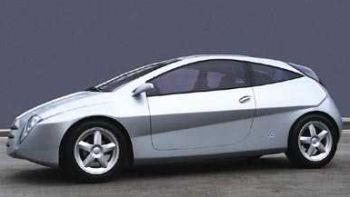
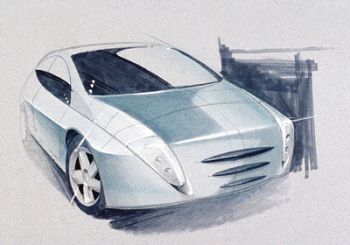
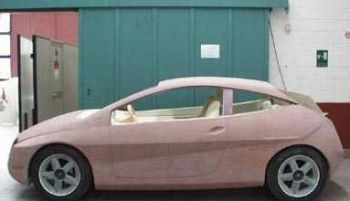 |
|
Thesis Uno, recently
created by Design Service Network, Beestudio and
Oral Engineering, is a modular, framework chassis
that allows the front or mid-mounting of an
engine-transmission group, depending on 2 seat
sports or 4-seat saloon requirements, a flexibility
eased by the use of removable aluminium tubing and
interchangeable modules |
|
|
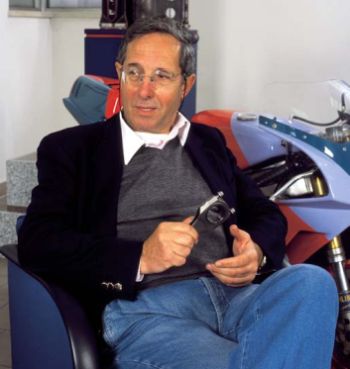 |
|
Chief engineer
of Project 1221 is Mauro Forghieri, who is of course a well-know name in the history
of Formula 1, having been synonymous with Scuderia Ferrari
over a period of more than 25 years, starting with the 1962
250 GTO. |
|
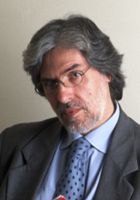 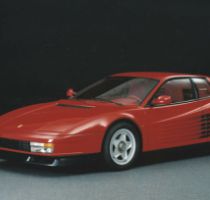 |
|
Emanuele Nicosia
(above, left), who now runs Swiss-based Design Service Network (DSN), heads the new design team, and has
been entrusted with translating into production form the
existing design concepts for
Project 1221. Nicosia's previous designs include the Ferrari
Testarossa (right). |
|
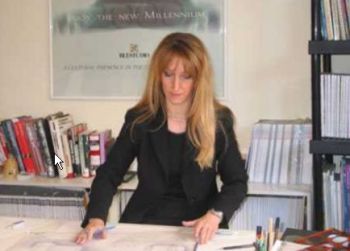 |
|
Anna Visconti
was born in Turin, where she attended the ‘Istituto
Statale d’Arte Applicata’ getting the ‘Diploma of
Maestro d’Arte’, specialized in fashion and
costumes. In 1980 she attended the stage at Fashion
Art College in Loughborough, England and, in 1982 at
Pininfarina Centro Ricerche. |
|
|
Mauro Forghieri is of course a well-know name in the history
of Formula 1, having been synonymous with Scuderia Ferrari
over a period of more than 25 years, starting with the 1962
250 GTO. Subsequently, he has also held the roles of
Technical Director with both Lamborghini Engineering, where
he designed the 3.5-litre V12 Lamborghini F1 engine that
made its Grand Prix debut in 1989, and with the
briefly-revived Bugatti Automobili.
Modena-based Oral engineering was founded in 1996 by Sergio
Luigi. Using advanced CAD-CAM tools, and very high precision
methods, Oral have, in recent years, designed and built
prototype cars and engines. Forghieri also holds down the role of
Commercial and Technical Director with this firm.
Emanuele Nicosia, who now runs Design Service Network (DSN),
a Swiss-based concern, heads up the new design team, and has
been entrusted with translating into production form the
existing design concepts for
Project 1221. Among DSN's recent works is the V-PER, a
2-cylinder motorbike which is now built in Waco, Japan, in
strictly limited quantities.
While working for Pininfarina, Nicosia is particularly remembered for
designing the pioneering 1979 Jaguar XJS Spyder prototype,
and developing the exterior design concepts for the 1984
Ferrari 288 GTO and Testarossa models, as well as penning
the early Alfa Romeo 164 sketches. Also, among his most
notable works, are the interior designs of the Lamborghini
Diablo and of the Bugatti EB110 GT, which were carried out
in the early 1990s under the DSN banner.
Anna Visconti,
who along with Nicosia founded the Turin-based Beestudio in
1990 and is also a key player in DSN, will be responsible
for the production development of the existing interior
design concept. Since 1999 she has been the general-manager
of Beestudio, while she can draw on extensive previous
experience at the IDEA Institute, and the Trussardi
Fashion Group.
Lastly, Andreas
Andrianos, is the Chief Executive of Project
1221, which will undertake the actual building, marketing
and all the commercial aspects of this programme. Besides coordinating the twin development teams in Modena
and Turin, he will also be handling the appointment of a small
group of exclusive distributors, in selected international
locations of special interest. Andrianos is also the engineer
that carried out all the exploratory conceptual work and
built the preliminary clay models that have formed the basis
of the project.
|
|
by Edd Ellison |
|
 |
|
![]()
![]()